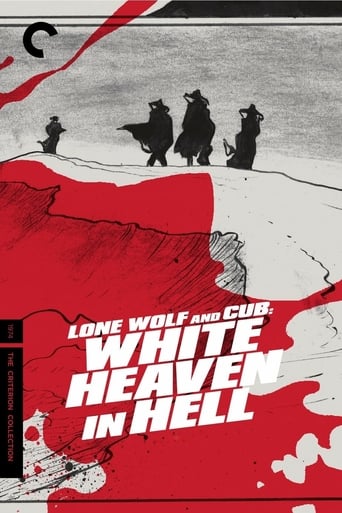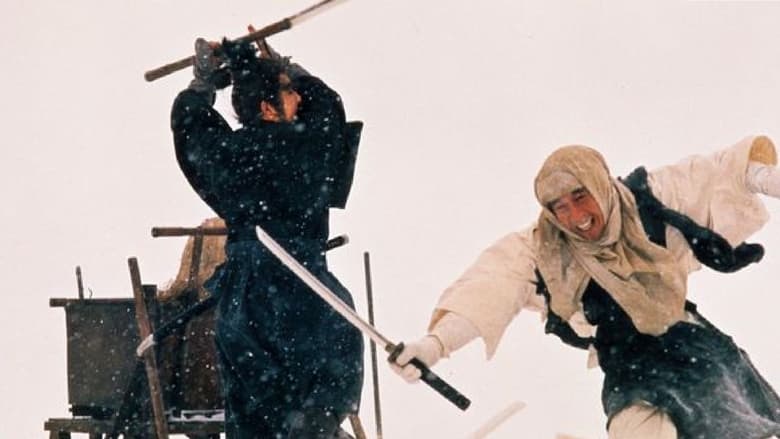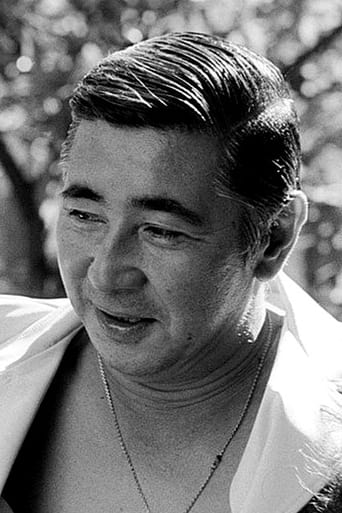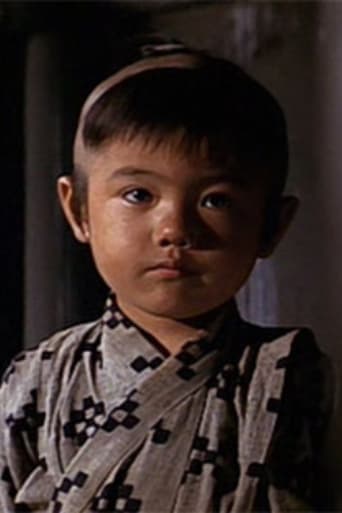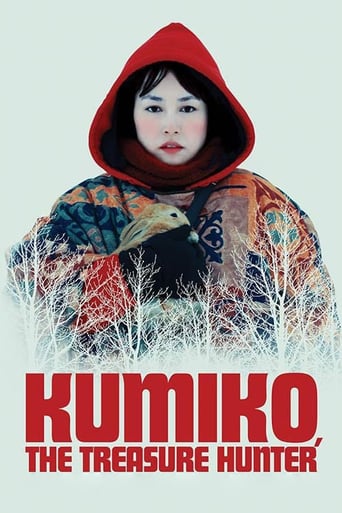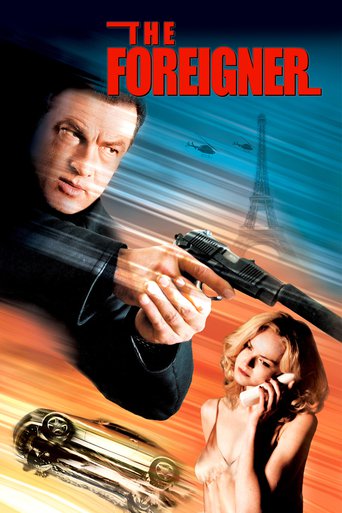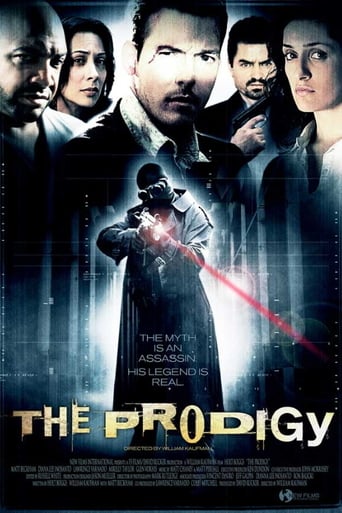Lone Wolf and Cub: White Heaven in Hell (1974)
In the sixth and final film of the Lone Wolf and Cub series, the final conflict between Ogami Itto and the Yagyu clan is carried out.
Watch Trailer
Cast


Similar titles
Reviews
While it doesn't offer any answers, it both thrills and makes you think.
All of these films share one commonality, that being a kind of emotional center that humanizes a cast of monsters.
I enjoyed watching this film and would recommend other to give it a try , (as I am) but this movie, although enjoyable to watch due to the better than average acting fails to add anything new to its storyline that is all too familiar to these types of movies.
This is a dark and sometimes deeply uncomfortable drama
The vengeful Retsudo (a deliciously venomous portrayal by Minoru Oki) assigns his lethal only remaining daughter Kaori (lovely Junko Hitomi) to kill Ogami (the redoubtable Tomisaburo Wakayama) and his son Daigoro (adorable Akihiro Tomikawa). When Kaori fails to accomplish her mission, three deceased warriors are resurrected to take care of both Ogami and Daigoro once and for all. Director Yoshiyuki Kuroda and writer Tsutoma Nakamura totally go for broke with this enjoyably outrageous final entry in the series: This time we've got an astronomical triple digit body count, oodles of hysterically gory blood-spraying violence, a grim take-no-prisoners tone (innocent folks who help out Ogami and son all meet brutal untimely fates), striking widescreen cinematography, a cool supernatural bent, several neat gimmicks (the baby cart is equipped with a gatling gun!), a funky-grooving score that sounds like it belongs more in a 70's blaxploitation flick, and, best of all, a wild pull-out-all-the-stops epic climatic battle sequence set on a snow swept mountain in which Ogami takes out over a hundred opponents. A satisfying berserk closer to this on the money series.
The final chapter in Ogami Ittō's quest for vengeance against the scheming clan that murdered his wife, ousted him from honorable life and tirelessly hounded him at every turn. After a brief pause for contemplation in the preceding chapter, the franchise's tendency toward wanton violence has returned in a big way. Ittō single-handedly dispatches close to 150 armed men, high in the cinematic record-books, with dozens of assists from his young son via their gimmicked baby cart. Though many are mere foot soldiers, a surprisingly large number are named, developed, wholly unique characters. That's been a trademark of the series: establish a wild cast of colorful, weird supporting players/rivals and then take turns dispensing with them in swift, decisive swordfights. One would think this might lead to fatigue, both in the audience and the creative room, but the well never seems to run dry and those abrupt, almost anticlimactic duels give the films a distinct, intense physical identity. A new director and a fresh setting also delivers a newer, more refined look and feel to this film. It's the best-shot entry in the series, no doubt, but also one of the most compelling stories. Where the Lone Wolf has thus far operated with relative impunity, negotiating with his blade, this last set of foes turn the tables by ruthlessly executing each innocent native he encounters. The guilt weighs heavily, especially when an entire hotel's staff and guests are hung out to dry, and that forces him to make some difficult decisions. Occasionally it carries things a bit too far - the mystical enemies who effectively swim through dirt are a major reach - but despite those eccentricities I consider this the best of the six films. The only thing it's missing is any sort of conclusion: we reach the very brink of a final duel and the foil merely disappears over the horizon, licking the wounds of his army and vowing to fight another day. It's a tremendous disappointment that they never polished this off, but perhaps it's best to leave on a high note.
"Kozure Ôkami: Jigoku e ikuzo! Daigoro" aka. "Lone Wolf And Cub: White Heaven In Hell" of 1974 is the sixth and (sadly) final installment to the brilliant Ôkami-cycle starring the great Tomisaburo Wakayama as Ogami Itto, my personal choice for the greatest (anti-)hero character in the history of moving images. While the finale is, not my favorite in the cycle (actually, it is my least favorite of the six), it is nonetheless a brilliant movie that no fan of Chambara or Japanese film in general could possibly afford to miss. The entire "Kozure Okami" cycle ranks high on my personal all-time favorite list and even my least favorite parts, the third and this one, get the highest possible rating of 10 out of 10 from me. This last Ôkami film is essential to Japanese cinema fans for a variety of reasons: First off, the entire cycle is essential to Chambara fans, and all true cineastes in general. This last part is also unique in a very particular way: Believe it or not, "White Heaven In Hell" is THE film with the highest on screen-body-count caused by a single person in motion picture history. The Ôkami films are all (very stylishly) ultra-violent and blood-soaked and from the third Ôkami film onward, the films always had ultra-bloody battles in the end, in which Ogami Itto single-handedly (or, more precisely, with help of his son Daigoro) wipes out entire armies of enemies. This last part is the most extreme in this regard, as Ogami Itto kills 104 people in the final showdown alone.The Ôkami films are brilliant in all regards, be it the immensely stylish bloodshed, the brilliant characters, the impressive cinematography or beautiful Japanese settings. My arguably favorite aspect, however, is probably the father-son relationship between Ogami Itto and his son Daigoro (Akihiro Tomikawa). Working as an assassin, Ogami Itto, former Kaishakunin (highest executioner) of the Shogunate, travels through feudal Japan with his infant son Daigoro, in order to clear his name and avenge his wife's death. Throughout the cycle, Daigoro, who is a baby in the first film, grows, and his upbringing and the father-son relationship are unique and strangely heart-warming. Daigoro, who often engages actively in his father's fights, hardly sits in his baby cart any more in the later films, but he still uses the ingeniously modified cart in battle. Shortly spoken: Ogami Itto is the greatest (anti-)hero character ever, and Daigoro is the most brilliant sidekick-character in cinematic history. American Director Robert Houston made an absolutely unnecessary dubbed re-cut of the first two Ôkami films under the title "Shogun Assassin". I didn't see the re-cut, and probably never will as the Japanese language is an essential factor. Also, the re-cut is narrated by Daigoro, which is idiotic, as it is one of Daigoro's most distinguishing character traits that he hardly talks. The original Ôkami-films are entirely brilliant, the entire cycle ranks among my favorite films of all-time, and each part has its particular magic. Even the slightly lesser parts (the third one and this finale) are masterpieces that any lover of Chambara in particular, or Japanese cinema, Exploitation, Martial-Arts, or just movies in general should love. My only regret with the "Ôkami" cycle is that they didn't make more sequels. My advice: If you don't know them yet, get all six "Lone Wolf And Cub" films, and watch them NOW!
This is the last episode of the BABY CART series, which centers around a father-and-son assassin duo who are out to destroy the Yagyu clan who betrayed them in the first installment of the series.This one has more of the usual inventive battles, including a fight with zombie-type ninjas, and a great end battle on skis through snow-covered mountains.This one didn't quite end the way I thought, and left itself open for another installment that never came. Regardless, this is yet another solid entry in this excellent series, and a fitting end to a legendary set of films. The cinematography, acting, sets and settings, and swordplay choreography are all up to par with the other films - which means even compared to contemporary films - these were lightyears ahead of their time. I highly recommend the whole series for anyone who's into martial arts or pinky-violence films. 8.5/10

